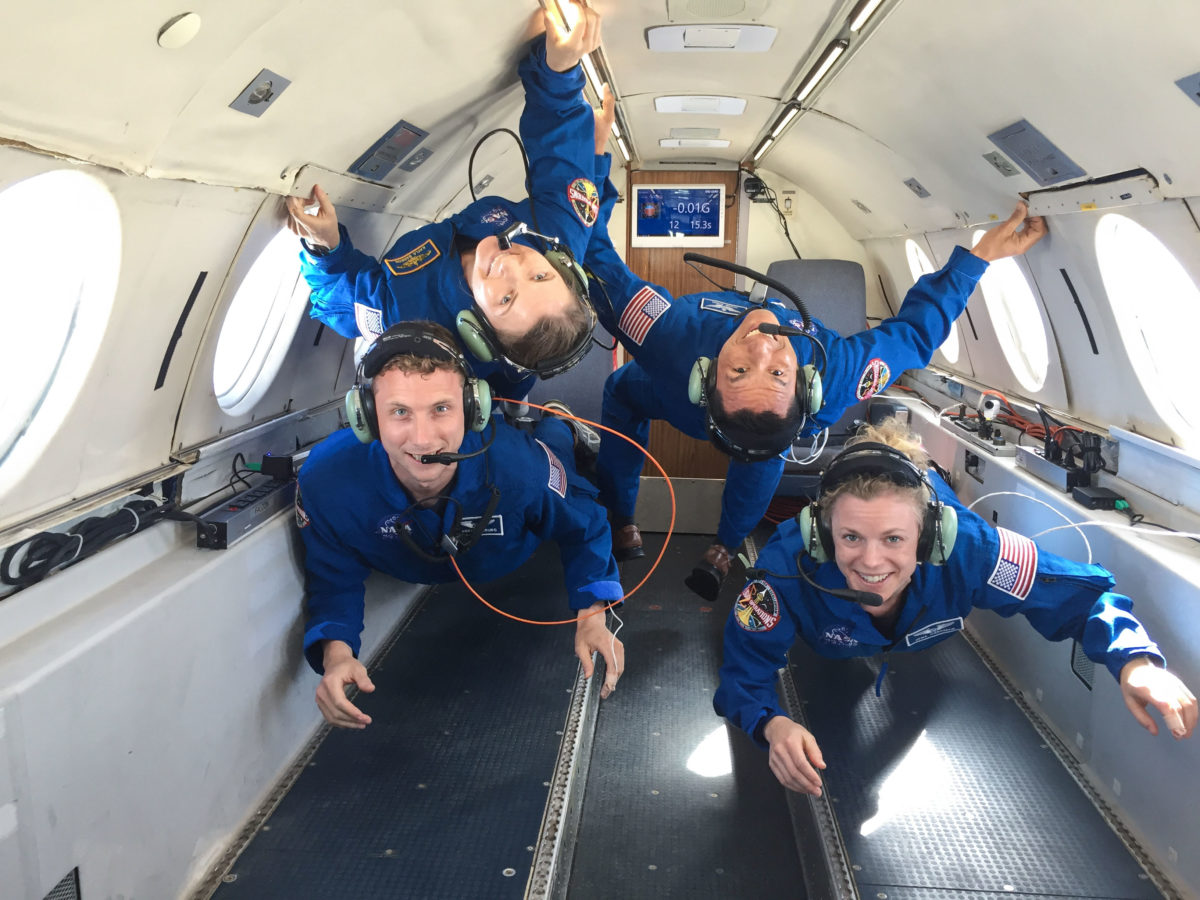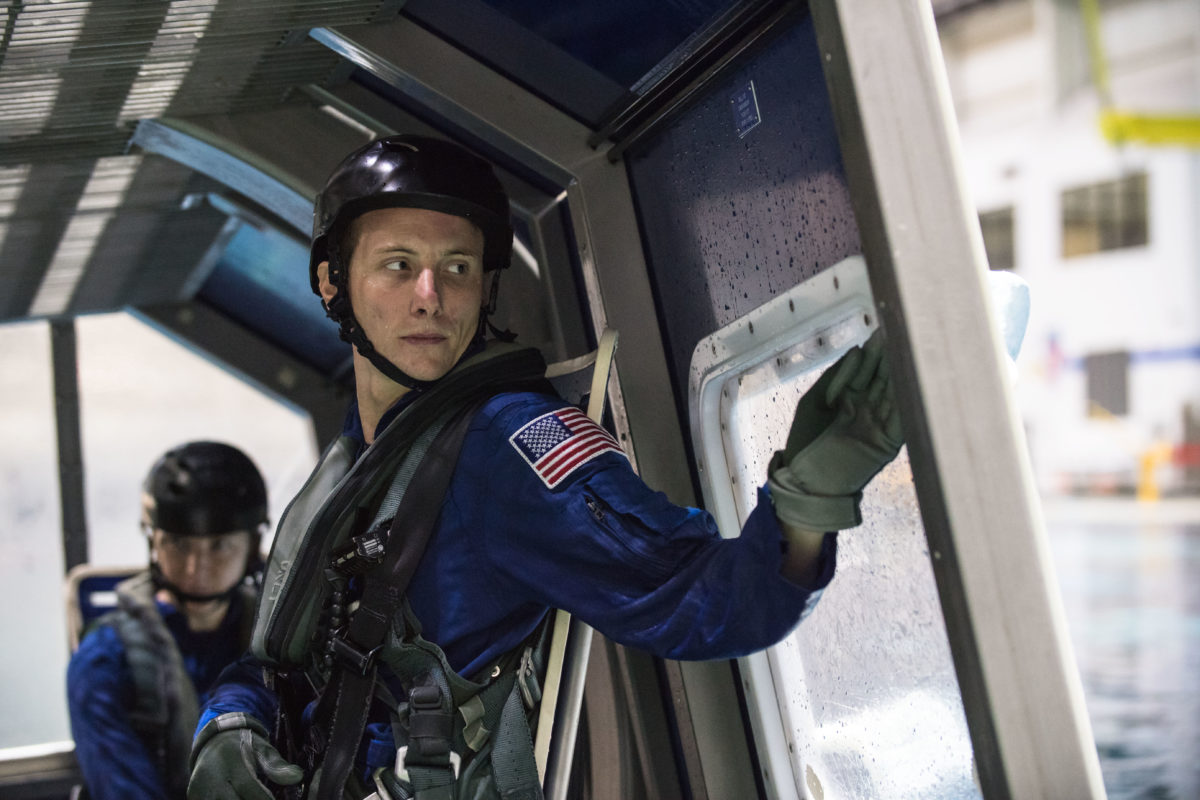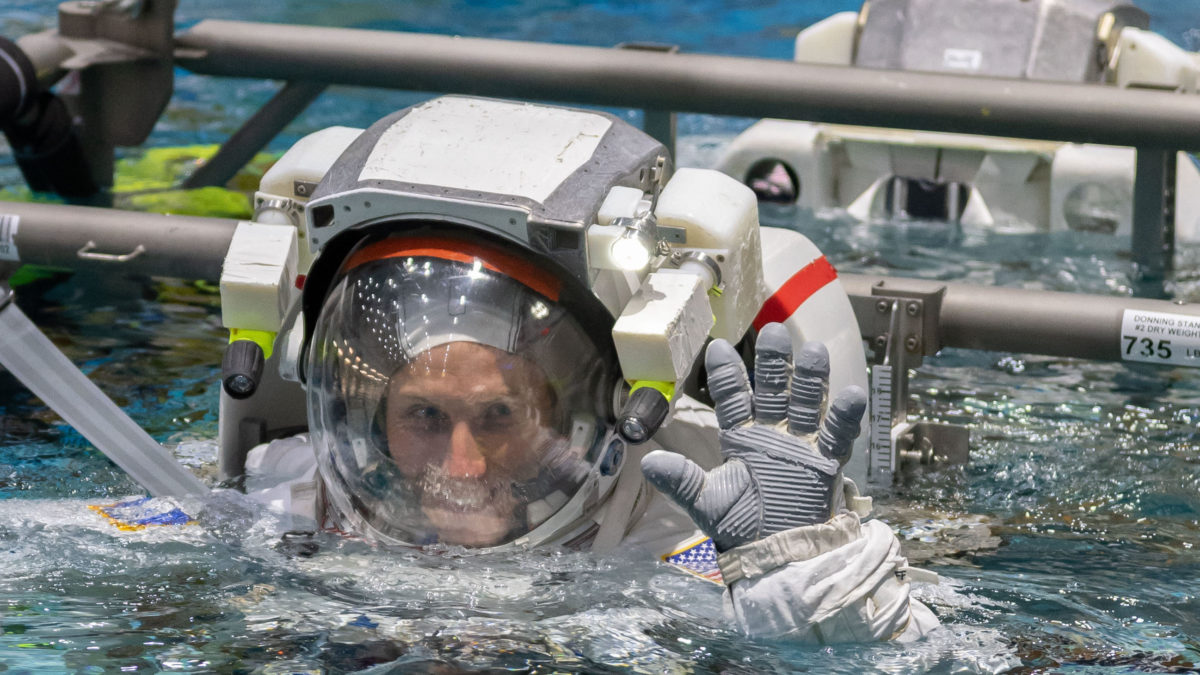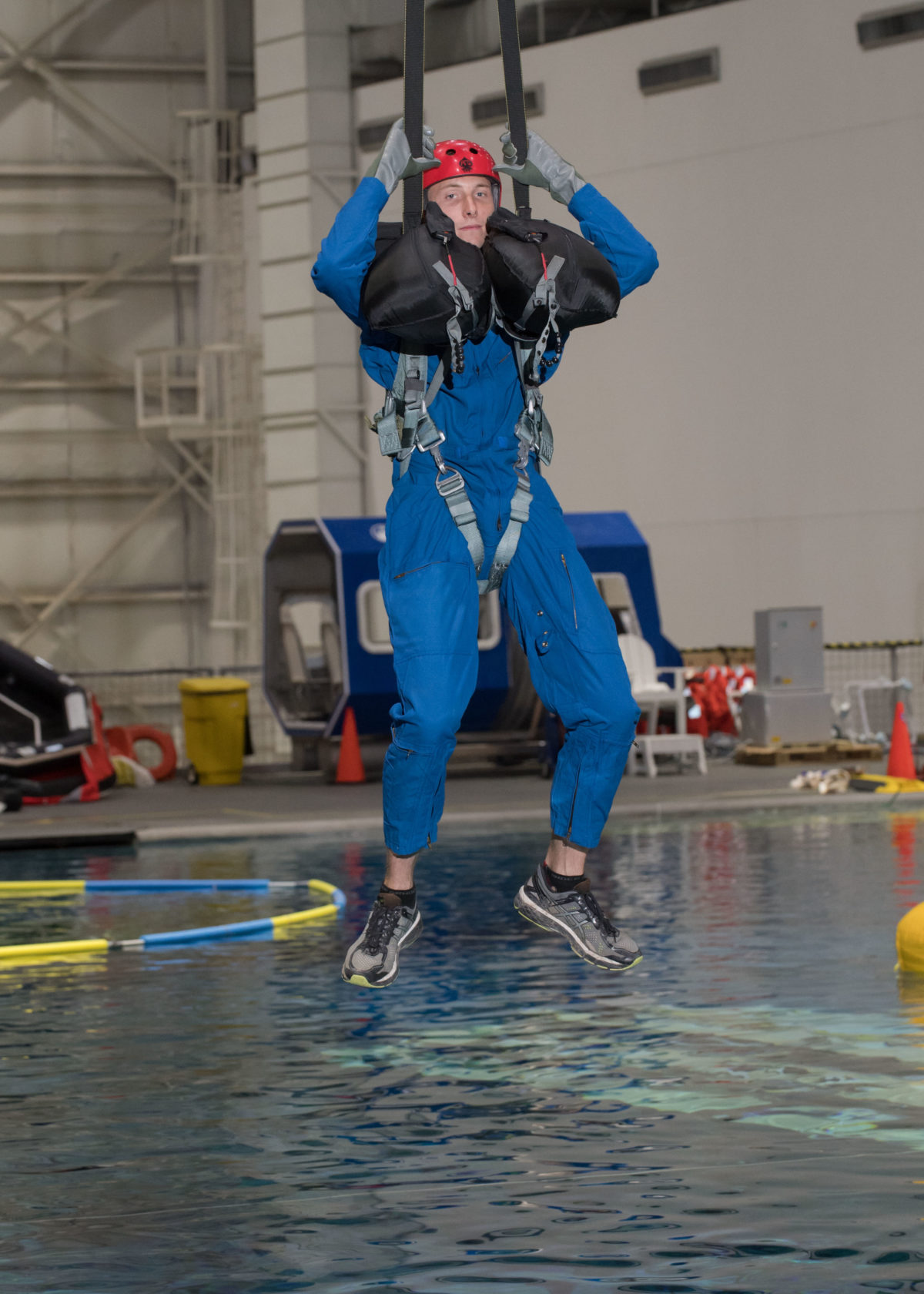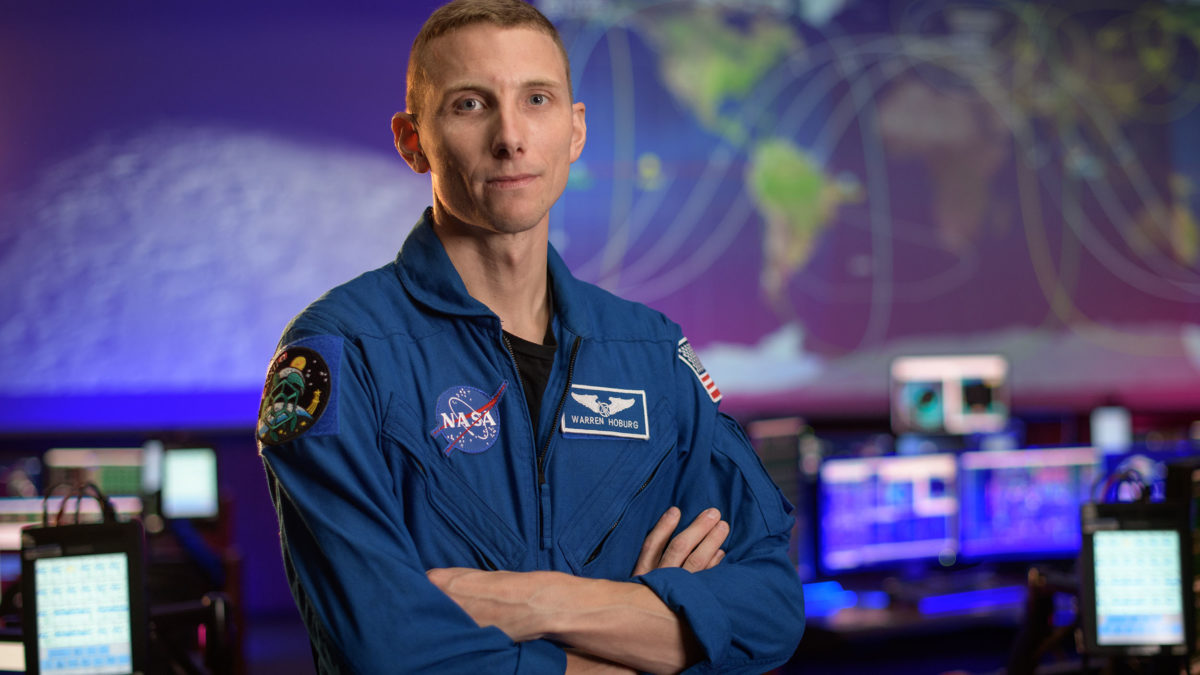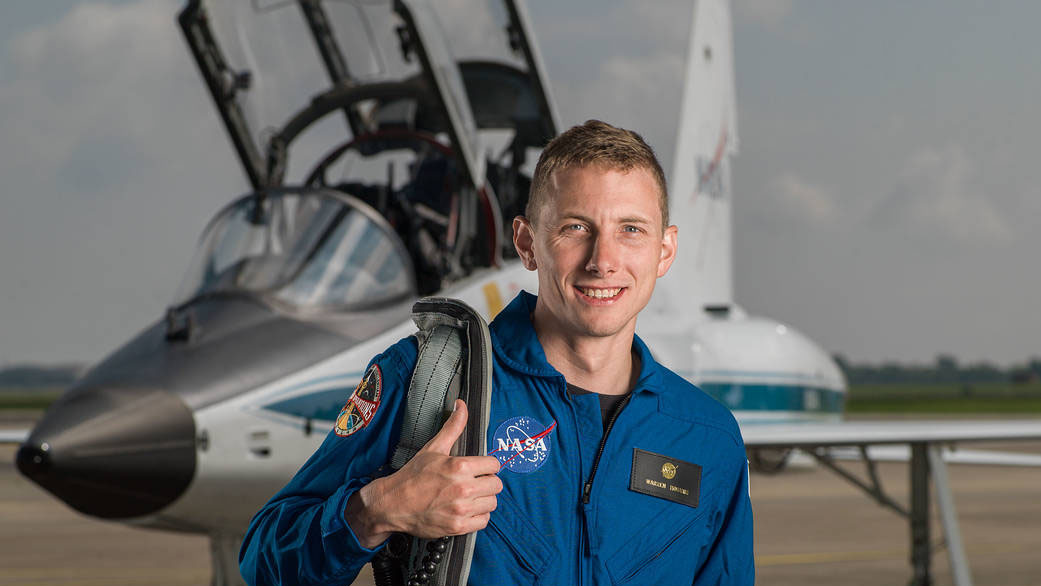 Warren “Woody” Hoburg in front of a T-38 trainer aircraft at Ellington Field near NASA’s Johnson Space Center in Houston. (Photo: NASA / Robert Markowitz)
Warren “Woody” Hoburg in front of a T-38 trainer aircraft at Ellington Field near NASA’s Johnson Space Center in Houston. (Photo: NASA / Robert Markowitz)To infinity and beyond: EECS alum becomes spacecraft pilot
When the SpaceX Crew-6 mission heads to the International Space Station (ISS) in spring 2023, Berkeley Engineering alum Warren “Woody” Hoburg (M.S.’11, Ph.D.’13 EECS) will be, quite literally, launching a new career. A NASA astronaut since 2017, Hoburg will be taking on the role of pilot on the spacecraft Dragon for the first time, applying years of intensive training.
“I always thought being an astronaut would be the coolest job ever, but I had no knowledge of how to get there,” he said. “It was only in hindsight that my skills and background made sense.”
After receiving his bachelor’s degree from MIT in aeronautics and astronautics, Hoburg came to Berkeley to earn his master’s and Ph.D. under adviser Pieter Abbeel, professor of electrical engineering and computer sciences. But after two years, his original plan to research machine learning for robotics changed direction. “While studying convex optimization, I realized that a special type of optimization, geometric programming, was well-suited for aircraft design,” he said.
“The first time I met Woody, he already had an exceptionally clear vision: he wanted to become an astronaut, and his Berkeley Ph.D. was one step toward that,” said Abbeel. “His thesis demonstrated that sizing all the parts and subsystems of an aircraft can be formulated in a way that’s mathematically reliable and efficient to solve, enabling each design cycle to take seconds or minutes instead of hours or days.”
Much of Hoburg’s doctoral study was completed from a staging area in Yosemite National Park, where he worked during the summers of 2010 and 2011 on the Yosemite Search and Rescue Team. He trained as an EMT and learned to hang off ropes to save stranded rock climbers. It exposed him to high-stakes decision-making — the kind you’d need when encountering unexpected situations on a space mission.
Having earned his Ph.D., Hoburg spent a year at Boeing Commercial Airplanes developing software for composite manufacturing processes, learning about the industry and how his optimization work could add value to the market. He then joined the MIT faculty, leading a research group that developed software for aircraft design. Using his new mathematical approach based on convex optimization, his team’s tools enabled faster and more reliable design iterations than previously thought possible.
But when Hoburg heard through a friend that NASA was accepting applications, he took a shot and applied. “Somehow I was lucky enough to get that once-in-a-lifetime phone call,” he said. He joined NASA as a member of the 2017 astronaut class.
Five years later, Hoburg is in the thick of mission training, focused on two separate functions: first, preparing to fly Dragon to the ISS and back; and second, training for six months of living and working in space.
The voyage to the ISS will take roughly 24 hours, depending on orbital dynamics. Once the crew docks with the ISS, it will stay aboard to conduct scientific research in the weightless environment. Rather than conducting their own experiments in space, the crew are hired as generalists who understand the scientific method and can operate a range of experiments in collaboration with teams of experts on the ground. The focus of Crew-6’s research is still in development; prior to flight, they’ll receive training on each of the experiments they’ll be working on.
The astronauts will also use themselves as human test subjects. For example, Hoburg will be eating a diet rich in flavonoids, lycopene and omega-3 fatty acids to see if it could help on longer-duration missions. He’ll also grow fresh food in space and collect biological samples to learn how different bodily functions adapt to spaceflight — including immune response, eye changes and impacts to the vestibular system.
The crew’s other big task is continual maintenance of the ISS systems. “We’re space plumbers, we’re space electricians,” Hoburg said. “We fix things when they’re broken, and sometimes that requires us to go outside on spacewalks.”
To train for the launch and return phases of flight, he’s spending time at SpaceX, learning how to handle emergencies and malfunctions with the Dragon spacecraft’s many systems. Flying Northrop T-38 Talon jets, for example, is helping him exercise decision-making skills.
Hoburg and his crew mates are also training for spacewalking at NASA’s neutral-buoyancy facility: a 40-foot-deep tank that holds 16.2 million gallons of water and a full-scale mock-up of the space station. “Nowhere else on Earth can we replicate the unique mental and physical skills needed to make repairs outside the ISS,” Hoburg said.
All this training is preparing Crew 6 not just for the upcoming ISS launch, but possibly the next Artemis moon mission. “It’s very much on the horizon for NASA,” Hoburg said. “We need to refine all the tools and techniques we’ll use to put humans on Mars, and the moon is the perfect proving ground. More than 20 years of continuous habitation on the ISS makes us ready to establish a sustained human presence on the moon.”
Hoburg has now found the right balance between his technical, engineering side and his operational side. “I was always seeking ways to combine these two passions, but they never aligned perfectly until I got to NASA,” he said. “This is a place that needs highly technical people who love math and problem-solving, but who also want to do operations. I finally feel truly at home.”
Clearly, for Woody Hoburg, the sky’s the limit.
